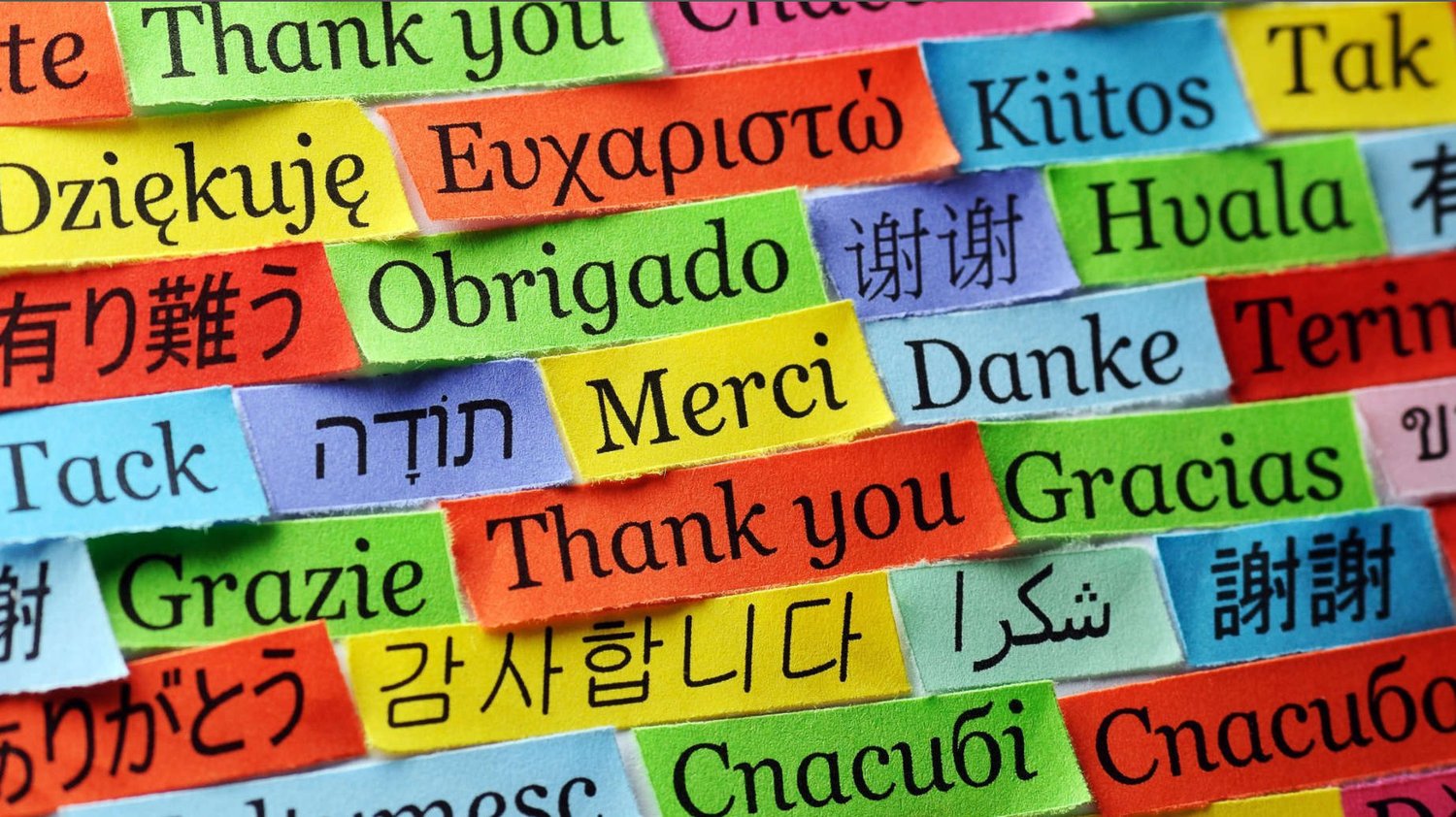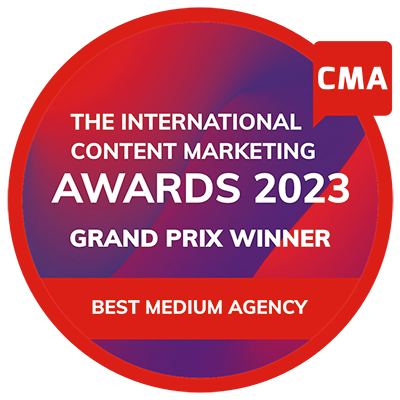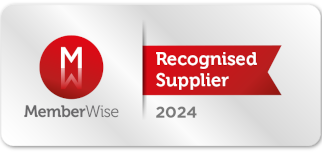
How to optimise your multilingual content strategy
Matt Colley,
-
DOWNLOAD
Your Content Marketing Checklist >

-
FIND OUT MORE
Our High-Quality Report Design Service >

-
REQUEST TODAY
A Free Content Consultation >

As global content marketers, one of the biggest challenges can be communicating your content and brand messages across multiple languages. Here are our tips on best practice and potential pitfalls when developing a multilingual content strategy, relevant for content marketing and brands with print magazines.
Back in 2002, when I was a fresh-faced university dropout who had just bagged a job in a contract publishing house, one of my first jobs was typesetting Saab Magazine in many different languages. It appealed to my borderline-obsessive attention to detail and interest in foreign languages – I quickly made the project my own, setting about each new edition with relish.
This was an established contract, but over the years Dialogue has launched several new multilingual projects – perhaps most notably our longstanding work with the Harley-Davidson Owners Group. We have revisited and refined our processes, and learned a lot along the way, to the point where we consider ourselves experts in providing multilingual project solutions.
So if you’re faced with the challenge of creating multilingual content for your brand, here are some tips you might want to consider:
Start at the beginning
If the source content doesn’t sing, neither will the translations. Make sure that the ‘master edition’ (usually English, but not always) is on brand, well written and concise. If you can’t get it right in your mother tongue, what chance do the translators stand?
It’s not just about the words, though – designers also play an important role in making multilingual content fit for purpose, and this is especially true with printed publications. It’s important to ensure that you have a plan to accommodate the inevitable extra text that many other languages generate. Either leave enough white space in the ‘master’ edition, or ensure you have expendable images, expandable columns or other malleable features that will make things easier when typesetting. French, for example, can run up to a quarter longer than English.
Translation, translation, translation
Choose your translation partners carefully. While machine translation may never be as reliable as a human – and certainly shouldn’t be considered as a cheap alternative with the technology currently available – most translation companies now offer automated verification of human-translated text, and checking of accuracy, adherence to a glossary and so on.
This may seem obvious, but the translator must always be a native speaker of the target language. If you get something translated back into your native language and it reads like an eight-year-old wrote it, the chances are the agency is cutting corners by using someone whose mother tongue is the source language. Don’t tolerate pidgin – it just means more subbing and rewriting work.
Finally, are the translators subject experts? If you’re working for a niche brand, it’s important that the translation company has a background of work within the relevant industry, and is willing to learn at least a little about the nuances of that brand. Some larger companies will consider ‘onboarding’ existing freelance translators – particularly ones with invaluable subject knowledge. In this way trusted freelance translators remain independent, but can be seamlessly integrated into the overall process and share their knowledge with others.
Don’t gloss over the glossary
Compile a glossary of terms that are particular to your brand. Which of these terms should be translated, and how should they be translated in each language? Or are some of them ‘brand names’ that must remain the same, irrespective of language? Bear in mind that elements such as trademarking may vary by market, so this should also be taken into account.
We learn our clients’ requirements quickly, and implement them fastidiously. We build style sheets for every edition, and every language.
Style it out
How is the style sheet different to the glossary, you may ask? The two go hand in hand, but the style sheet should contain typesetting tips and tricks rather than linguistic and grammatical preferences. German quote marks can be a little „different“ to English ones; while the French use « guillemets ». Les français also tend to add spaces before colons, semicolons, exclamation marks and question marks.
How does each market display numbers? Is a thousand displayed as ‘1,000’, ‘1000’, ‘1 000’ or ‘1.000’? How do markets treat page furniture? Should standfirsts, picture captions and pull quotes have full points at the end? Should you italicise titles of books, movies, video games, ships? It's vital to get these small touches correct, to make sure that your translated output has as much authenticity as the source text.
Don’t be an idiom
It’s so easy to write for an English-speaking audience. Idiomatic headlines, little nods to cultural peccadilloes and obscure British TV shows… all of these will quickly ostracise your readership in other territories. Our content team all understand how to make our content globally relevant; that quirky double entendre or witty piece of English alliteration will probably be totally redundant in Finnish or Portuguese. Also, it’s always worth empowering the translators to propose a different headline if the literal translation is meaningless or misleading.
Formatting multilingual content
Formatting can go missing in so many ways.
Let’s say I write some copy in Word, adding a word in italics for emphasis. The designer then lays the article out and I send it to the client.
After reviewing it the client sends some revised copy. When this is approved, we strip it from the layout and put it back into a Word document for translation.
The translator returns the copy in Dutch and one of our team typesets it. The Dutch client then resupplies a whole paragraph to superimpose over the original.
One lonely little word in italics has to pass through all these stages to make it on to the printed page or live website. It could go missing at any stage without proper care and attention.
There are other typographic elements that need to be taken into consideration when designing your material. For example, many languages have accents and special characters that may not be available in your chosen font. For those languages that use non-Roman alphabets, a different font entirely may be required.
Control multilingual production
Never underestimate the amount of time it takes to accurately complete a multilingual content marketing project. We know from experience that this certainly isn’t a one-person job.
Even if the workload is theoretically manageable by one person, it’s still best to split it up. For example, if I spend a whole day typesetting or proofreading, I know I’ll get ‘tunnel vision’. My accuracy will decline the longer I do it. It’s also not going to be a great deal of fun.
My team therefore shares the workload to keep it fresh. We also like to check each other’s work when time permits. It’s not uncommon to have several of us working on a multilingual project at peak times.
Be top of the charts
It’s important to always stay on top of the project. Our solution has been to devise shared, web-based production trackers that allow the team to see at a glance what stage each article is at in each language.
A quick scan of the tracker means anyone should be able to see which translators are running late, which articles have been sent to the client for checking, which markets are being tardy with feedback, and how close each edition or web article is to completion. It's also a great way of maintaining communication between the editorial and design teams, with real-time updates to the tracker circumventing a need for constant back and forth via email.
Everyone involved in the project is aware that keeping the tracker up to date is vital. Whenever we do something, we note it on the tracker.
Manager first, editor second
It’s crucial to have a clear distinction between the roles of an editor and project manager. When working on the ‘master’ magazine or website I need all my regular editorial skills, but once I switch into multilingual mode I’m more of a project manager.
The chances are that I’ll also be communicating with clients in many different countries to get the articles checked and approved. This means I’m also effectively playing the role of a client services manager alongside my editorial duties.
The trick is to never be afraid to pick up the phone and make an international call. I also never underestimate how much just one or two words in an unfamiliar language will be appreciated by clients in that country.
Dealing with multilingual mail
We could get hundreds of megabytes of mail every day with dozens of annotated PDFs and questions from different countries. How do we cut through it all and make sure our inboxes don’t crash? And what if the articles are huge and can’t even get through to our clients in the first place?
Using online proofing and project management tools has revolutionised the way we work. Clients simply make their corrections collaboratively online. They don’t need to download any software, and I get automatic notifications whenever a proof is corrected and the changes are ready to be implemented.
Following these tips helps to iron out any procedural difficulties when creating multilingual digital and print content, so you can reach your global audience with ease.
Or give these cool blogs a read
See more from the blogThe benefits of membership magazines
The value of advertising in membership magazines
Content Marketing Agency of the Year at the CMA Awards
MX-5 Owners' Club magazine wins at Classic & Sports Car Club Awards 2022
Dialogue creates award-winning multichannel content that inspires, informs and excites your audience. We are a team of marketing specialists in print, online platforms, email communications, magazines, video creation, digital media and more.












